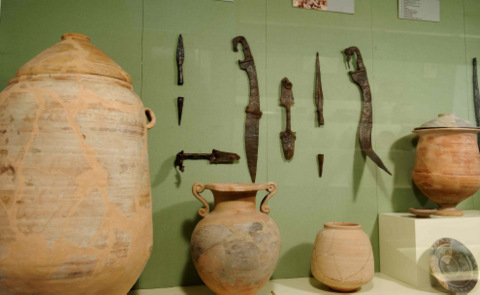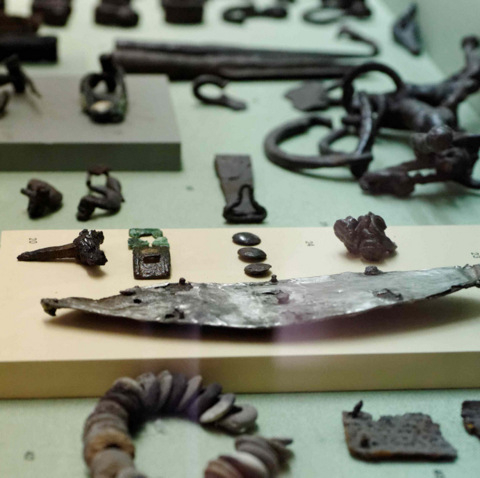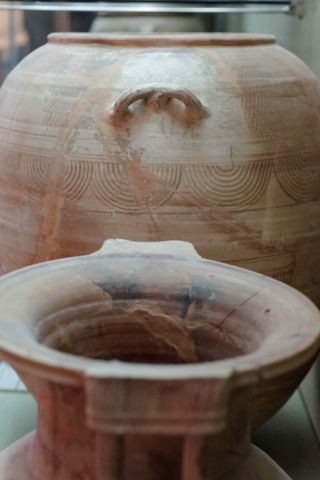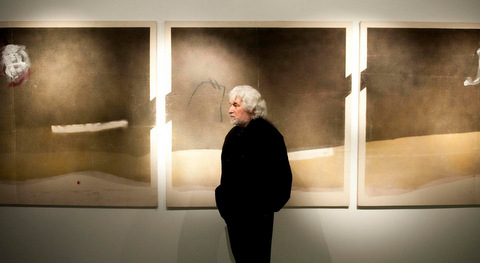- Region
- Águilas
- Alhama de Murcia
- Jumilla
- Lorca
- Los Alcázares
- Mazarrón
- San Javier
-
ALL AREAS & TOWNS
- AREAS
- SOUTH WEST
- MAR MENOR
- MURCIA CITY & CENTRAL
- NORTH & NORTH WEST
- TOWNS
- Abanilla
- Abarán
- Aguilas
- Alamillo
- Alcantarilla
- Aledo
- Alhama de Murcia
- Archena
- Balsicas
- Blanca
- Bolnuevo
- Bullas
- Cañadas del Romero
- Cabo de Palos
- Calasparra
- Camping Bolnuevo
- Campo De Ricote
- Camposol
- Canada De La Lena
- Caravaca de la Cruz
- Cartagena
- Cehegin
- Ceuti
- Cieza
- Condado de Alhama
- Corvera
- Costa Cálida
- Cuevas De Almanzora
- Cuevas de Reyllo
- El Carmoli
- El Mojon
- El Molino (Puerto Lumbreras)
- El Pareton / Cantareros
- El Raso
- El Valle Golf Resort
- Fortuna
- Fuente Alamo
- Hacienda del Alamo Golf Resort
- Hacienda Riquelme Golf Resort
- Isla Plana
- Islas Menores & Mar de Cristal
- Jumilla
- La Azohia
- La Charca
- La Manga Club
- La Manga del Mar Menor
- La Pinilla
- La Puebla
- La Torre
- La Torre Golf Resort
- La Unión
- Las Palas
- Las Ramblas
- Las Ramblas Golf
- Las Torres de Cotillas
- Leiva
- Librilla
- Lo Pagan
- Lo Santiago
- Lorca
- Lorquí
- Los Alcázares
- Los Balcones
- Los Belones
- Los Canovas
- Los Nietos
- Los Perez (Tallante)
- Los Urrutias
- Los Ventorrillos
- Mar De Cristal
- Mar Menor
- Mar Menor Golf Resort
- Mazarrón
- Mazarrón Country Club
- Molina de Segura
- Moratalla
- Mula
- Murcia City
- Murcia Property
- Pareton
- Peraleja Golf Resort
- Perin
- Pilar de la Horadada
- Pinar de Campoverde
- Pinoso
- Playa Honda
- Playa Honda / Playa Paraíso
- Pliego
- Portmán
- Pozo Estrecho
- Puerto de Mazarrón
- Puerto Lumbreras
- Puntas De Calnegre
- Region of Murcia
- Ricote
- Roda Golf Resort
- Roldan
- Roldan and Lo Ferro
- San Javier
- San Pedro del Pinatar
- Santiago de la Ribera
- Sierra Espuña
- Sucina
- Tallante
- Terrazas de la Torre Golf Resort
- Torre Pacheco
- Totana
- What's On Weekly Bulletin
- Yecla


- EDITIONS:
 Spanish News Today
Spanish News Today
 Alicante Today
Alicante Today
 Andalucia Today
Andalucia Today
El Cigarralejo museum of Iberian Art in Mula
 Museo de Arte Ibérico El Cigarralejo, Mula
Museo de Arte Ibérico El Cigarralejo, Mula
The El Cigarralejo Museum in Mula houses finds from the El Cigarralejo Iberian site 4 kilometres from the centre of the town, in a strategic position overlooking important prehistoric communications networks which linked the coast with central Spain.
The El Cigarralejo site is one of the most important Iberian archaeological sites not only in the Region of Murcia but also in Spain. It comprises a town settlement, a burial necropolis and a religious sanctuary set on 3 levels, and the volume of artefacts recovered has made it a centre of international study and a reference point for the study of the Iberian populations of Spain.
Address:
Palacio del Marqués de Menahermosa, Calle del Marqués 1, 30170 Mula
Nearest parking to El Cigarralejo
 The nearest easy parking is in the area of the Convento Iglesia San Francisco and the Glorieta, which contains a charming garden and a café serving exceptional tapas with an outdoor café area. Click for Calle del Márques, Mula.
The nearest easy parking is in the area of the Convento Iglesia San Francisco and the Glorieta, which contains a charming garden and a café serving exceptional tapas with an outdoor café area. Click for Calle del Márques, Mula.
Telephone: 968 661 422
Usual opening times:
Monday to Friday 10am to 2pm, Saturday and Sunday 11am to 2pm.
On Sunday artesan market days, the Museum is open from 11am to 2pm.
If taking a group, please call and confirm opening hours as there are sometimes unpublicised changes.
The museum also runs educational courses for children and adults and hosts temporary workshops and exhibitions.
The Iberians and the contents of the Museum
 Iberian culture is broadly dated to between the 7th and 1st centuries BC. It emerged at the end of the Bronze Age, when the indigenous populations of what is now Spain had developed to a point where the use of iron for producing tools had raised farming above a subsistence level activity and had made the agricultural practices of growing food so efficient that surplus crops could be grown. This created possibilities for trade and allowing members of a community to specialise in trades which did not rely on their own food production capacity: thus it was possible to exploit the abundant natural mineral resources of Spain, providing raw materials which could be smelted and traded.
Iberian culture is broadly dated to between the 7th and 1st centuries BC. It emerged at the end of the Bronze Age, when the indigenous populations of what is now Spain had developed to a point where the use of iron for producing tools had raised farming above a subsistence level activity and had made the agricultural practices of growing food so efficient that surplus crops could be grown. This created possibilities for trade and allowing members of a community to specialise in trades which did not rely on their own food production capacity: thus it was possible to exploit the abundant natural mineral resources of Spain, providing raw materials which could be smelted and traded.
This co-incided with a time of interaction between eastern Mediterranean populations, seeking trading relationships and products throughout the Mediterranean basin, as Phoenicians, Carthaginians and Greeks ranged far in their search of trade goods. The abundant raw materials, crops and products produced by the Iberians lead to trading interchanges which, in turn, influenced the development and customs of the native population in fields such as writing, coinage, new crops, new technology (the Phoenicians brought the potter's wheel to Spain), all of which generated a creative and cultural revolution. The people emerging from this age became collectively known as the Iberians.
Trading settlements established by these trading nations controlled the interchange of goods, some individuals involved in this process naturally becoming wealthier along the way, creating a wealthier elite. This, in turn, fed back into the populations producing the goods, creating a multi-layered society which consumed imported trade goods, and this society which is clearly reflected in the burials discovered: Greek and Italian ceramics and luxury goods were the prized possessions of those who could afford to buy them.
Of course, this wealth led to inter-tribal rivalries and competition for land and resources, leading in turn to the necessity for warriors, controlled by the elite and wealthy, a situation which only changed when the Romans invaded what is now Cartagena in 209 BC and a gradual process of Romanisation led to the disappearance of the Iberians as a definable culture.
Click here for more details about the Iberians and their culture.
El Cigarralejo
 The El Cigarralejo site is located 4 kilometres from the modern-day town of Mula, on the right hand bank of the River Mula, on the extreme northern face of a series of mountainous outcrops which dominate the area. This privileged location allowed it to dominate a network of communication routes following the natural lie of the land to link with other Iberian settlements at Archena and Jumilla as well as local communities in Cehegín (Begastri) and Caravaca.
The El Cigarralejo site is located 4 kilometres from the modern-day town of Mula, on the right hand bank of the River Mula, on the extreme northern face of a series of mountainous outcrops which dominate the area. This privileged location allowed it to dominate a network of communication routes following the natural lie of the land to link with other Iberian settlements at Archena and Jumilla as well as local communities in Cehegín (Begastri) and Caravaca.
The burial necropolis
Excavations at the site began in 1947, and continued practically uninterrupted for the next 40 years, revealing 547 individual burials. The site dates from the 4th to 1st century BC.
Little is known about Iberian religious practices or burial rites, but the evidence found in these burial sites shows that the deceased were cremated and buried with grave goods and there is evidence of subsequent ritual offerings. Burial grounds were carefully defined and isolated, and were normally near the main communications routes around the town, as is the case at El Cigarralejo.
The exact nature of the burial ritual itself depended on the status of the deceased, and although the burials are anonymous the status and sex of the individual are generally apparent in the grave goods discovered.
Prior to burial the body was cremated. It appears that the deceased would be cremated in their finest clothes, some of the burials yielding remains of fine cloths, together with personal jewellery and/or treasured possessions. The cremation took place on a pyre or in the tomb itself, which was dug into the ground.
 The most valuable personal possessions of the deceased would also be interred with the cremated remains: swords broken in two, lances, armour and shields have been found in the graves of the warriors, agricultural equipment in the graves of farmers, even the tools of ceramicists and a tanner reflecting the trades of the deceased, while their wives are accompanied by spinning weights, jewellery and items of personal adornment as well as domestic ceramics, some of them imported. The burnt remains and grave goods were placed in the grave, sometimes but not always, in a ceramic urn, and covered with stonework or a monument.
The most valuable personal possessions of the deceased would also be interred with the cremated remains: swords broken in two, lances, armour and shields have been found in the graves of the warriors, agricultural equipment in the graves of farmers, even the tools of ceramicists and a tanner reflecting the trades of the deceased, while their wives are accompanied by spinning weights, jewellery and items of personal adornment as well as domestic ceramics, some of them imported. The burnt remains and grave goods were placed in the grave, sometimes but not always, in a ceramic urn, and covered with stonework or a monument.
A walk through the El Cigarralejo museum
Room 1, Emeterio Cuadrado
This first room concerns the background of the site and the man who excavated it for 40 years, Emeterio Cuadrado - an engineer by profession, he also  had a keen interest in archaeology. The room shows the layout of the site, the tombs excavated and documentation and photographs relating to the excavations.
had a keen interest in archaeology. The room shows the layout of the site, the tombs excavated and documentation and photographs relating to the excavations.
Room 2, "Princely tombs"
The second room shows the remains of 7 burials, dating from the earliest found, dated to the early 4th century BC.
Amongst these are two outstanding burials, numbers 200 and 277, which clearly contained very important members of the elite Iberian society and featured imported luxury items including such as Greek and lacquered ceramics as well as a set of bronze weights. As trade links with other cultures developed, the wealthier individuals were able to surround themselves with luxury goods, jewellery and imported status symbols, such as Greek pottery, testifying to their prestige and power.
Room 3, Agriculture
 This room focuses on the key activity around which Iberian society revolved by necessity, containing items recovered from individuals who were linked to agricultural activity, one in particular being tomb number 209.
This room focuses on the key activity around which Iberian society revolved by necessity, containing items recovered from individuals who were linked to agricultural activity, one in particular being tomb number 209.
This contained iron agricultural implements including a curved sickle, which would have been used for harvesting grain crops. Wheat and barley formed the base of the Iberian diet and the remains of seeds and nuts have been found in the tombs, possibly given as offerings and showing that they were also part of the staple diet of the Iberians. The burial also contained other curved implements which would have been used to harvest crops, and in the same room are the remains of tomb 161, which contained scissors used to shear sheep along with other agricultural implements.
Room 4, Livestock farming
Livestock were the second pillar of Iberian agriculture, producing meat and dairy products as well as wool for clothing and skins, used in a wide variety of applications.
Tomb 333 yielded the tools of a man known as "the hidemaker". He clearly tanned hides, and the implements found relate to his work skinning animals, scrapers to remove meat and skin residue from the hides, and preparing the hides to make leather.
The products generated had a multitude of uses including footwear, belts, cordage, skins and furs for clothing and for lining helmets and shields, animal harnesses and as part of many other items of daily life.
The remains of 9 other tombs are also in this room, including small iron knives, iron awls, a bronze brazier and sword and sheath.
An interesting display board also shows the trading rates for livestock, giving an indication of how much a sheep was worth compared to a horse, for example.
Room 5, Ceramics
 In general terms, Iberian ceramic products were of high quality and were produced by specialized craftsmen using pottery wheels. Within the ceramics produced various categories can be distinguished according to the functions they performed.
In general terms, Iberian ceramic products were of high quality and were produced by specialized craftsmen using pottery wheels. Within the ceramics produced various categories can be distinguished according to the functions they performed.
Firstly, there were fired ceramics used for cooking. These were made with a thicker mix of clay, and were sometimes fashioned by hand rather than on the wheel.
Next there are “fine ceramics”, which imitate the decorative elements and shapes of the Greek and Carthaginian cultures and assumed an element of status and display. These include table crockery and containers for storing food. The decorations were normally geometric or based on human and animal figures, and often they were sequenced to narrate a story.
The last group consists of the large containers which were used for the storage and transportation of food in bulk: these imitated Carthaginian amphorae, as well as those designed for burials, containing ashes and grave goods.
The difference between ceramics of native origin and imported luxury goods can be clearly seen, the imported goods distinctive with their black and intense varnishes and elegant shapes.
This room also contains implements from the tomb of a ceramicist, showing the items used for grinding and preparing pigments for decoration together with the tools for creating designs and incisions on the ceramics being turned, and even the small container which would have held the pigments.
Room 6, Textiles
 Of the textile plants grown there is no doubt that the most important was esparto grass, which was a natural feature of all arid zones ni the south-east of the Iberian Peninsula. It was used to make ropes, footwear, mats and baskets, and the chronicler Pliny the Elder noted that the peasants also used it to make their beds and clothes as well as for lighting fires and torches. Strabo, the Greek geographer, also mentions esparto grass, saying that it was used to make ropes and was exported to other lands, especially Italy. In terms of textiles he highlights the use of flax for the making of clothes, and says that the cloth was decorated with different colours: Iberian dyes became famous for their variety and quality.
Of the textile plants grown there is no doubt that the most important was esparto grass, which was a natural feature of all arid zones ni the south-east of the Iberian Peninsula. It was used to make ropes, footwear, mats and baskets, and the chronicler Pliny the Elder noted that the peasants also used it to make their beds and clothes as well as for lighting fires and torches. Strabo, the Greek geographer, also mentions esparto grass, saying that it was used to make ropes and was exported to other lands, especially Italy. In terms of textiles he highlights the use of flax for the making of clothes, and says that the cloth was decorated with different colours: Iberian dyes became famous for their variety and quality.
Information regarding how the Iberians dressed and the ornaments they wore comes from the depictions of humans both in sculptures and the designs used to decorate ceramics. There is a wide variety, but the attire most often seen on women is two long tunics (although on special occasions a more sumptuous third one was added), a veil and a cloak. The men's tunics could be long or short and were held in at the waist by a belt. Sometimes they wore a cloak, or even two.
As for ornaments and accessories, some of which have been found not only in pictorial and sculptural representation but also among the grave goods discovered, they were made mainly out of gold, silver and bronze, and were sometimes inset with precious stones or coloured glass. Feminine ornaments found are tiaras and headbands with pendants for the forehead, earrings, necklaces, bracelets and rings, while men wore small earrings, neck-rings, rings, bracelets and belt buckles or brooches. Fibulae (the Iberian precursor of the safety pin) were used to support the different items of clothing.
The room contains fragments of different fabrics which have been found in the burials, together with the weights used in the manufacture of fabrics and needles. High levels of skill were employed to make fine fabrics, and there is documentary evidence of competitions between the women of a community to create the finest textiles with great prestige awarded to those who produced the highest quality work.
Room 7, Commerce and Transport
 This room shows the extent of commercial trade in this era, and how goods were distributed across the Mediterranean basin. It is quite extraordinary to think of these small merchant boats hopping along the coastline, transporting raw materials and finished products throughout the Mediterranean, and to consider the voyages undertaken by goods which turn up in burial sites throughout Europe.
This room shows the extent of commercial trade in this era, and how goods were distributed across the Mediterranean basin. It is quite extraordinary to think of these small merchant boats hopping along the coastline, transporting raw materials and finished products throughout the Mediterranean, and to consider the voyages undertaken by goods which turn up in burial sites throughout Europe.
The exhibits emphasize the importance of controlling trade routes, and why the location of settlements was of such vital importance. Strategic control of geographical features such as valleys, or rivers, used to transport goods, dictated the importance and prestige of individual settlements, creating wealth and the ability to buy in the protective services of warriors.
One of the most interesting pieces in this room is a relief showing an Iberian trade wagon pulled by two mules, retrieved from tomb 107. Other important trade goods such as Greek ceramics, highly prized by the elite, can also be seen, along with weights and balances and coins, although the Iberians generally bartered and lacked a coinage of their own.
Room 8, Iberian women and writing
This room holds several sculptural works representing women and their role in Iberian society.
With no written records to portray Iberian society and the role of women the only evidence available is funerary, which shows a mainly domestic role including weaving, sewing, cooking and personal adornment.
Women in Iberian society are often represented in a format hinting towards a role of divinity and fecundity, the job of ensuring the continuance of the human race giving them an almost divine status. The sculptures lean towards religious significance in the role of the woman in propagation of the species.
The items displayed show the items of personal adornment found in uniquely feminine burials, the jewellery, combs, and finery of their inhabitants as well as the vessels used in the preparation of perfumes and ungents, or perhaps cosmetics.
This room also explores the subject of written text, one of the tombs found (number 21) containing a small scored tablet of lead which carried Iberian text. This has been interpreted as some form of letter for the afterlife but unfortunately it has still not been deciphered.
There are also examples of inscriptions on Greek ceramics which are believed to represent trading marks for the ceramics.
Room 9, The warrior and his horse
 Although there was a distinct warrior class, there was no such thing as an Iberian "army".
Although there was a distinct warrior class, there was no such thing as an Iberian "army".
In the world of the Iberians there were frequent conflicts between communities aspiring to assert themselves politically, often in order to enhance the power of the aristocracy. The warriors were a select group who depended on a local chief or prince, although many of the burials which show weaponry also contain evidence of their inhabitants having another trade as well, so it doesn´t appear that being a warrior was a full time "job".
Attacks were likely to have been surprise ambushes rather than sustained war campaigns and no one community seems to have held enough power to have had an army as such, although those with warrior weaponry were obviously of a higher status than those without.
Their armoury was one of the most complete and best-known of ancient times. On the attack the warrior used a falcata (curved sword), a lance and a “soliferreum”, a heavy javelin. In defence each man had at his disposal a helmet, leg protection, armour made from iron or bronze and a large oval-shaped shield (“scutum”) as well as smaller rounded ones (“caetra”).
From the 3rd century BC onwards the Iberians trained as auxiliary warriors and cavalrymen at the service of the Carthaginian and Roman armies.
Also on display here are items of tack used for working with horses. These are usually associated with warriors and elite burials, horses being an expensive commodity.
Room 10, the funerary world
 The final room shows the structures of the different types of tombs found and items which had a ritual or funerary use. One of the most important of these is a sophisticated fretwork vase, probably used to burn perfumes.
The final room shows the structures of the different types of tombs found and items which had a ritual or funerary use. One of the most important of these is a sophisticated fretwork vase, probably used to burn perfumes.
Another major element of the site excavated at El Cigarralejo is the sanctuary, which was about 300 metres up the hill from the necropolis and held religious ceremonies. Inside, a large number of offerings were discovered buried beneath the floor, many taking the form of figures of horses known as exvotos. These are characteristic of other Iberian religious sites or sanctuaries: click here to read a little more about the El Cigarralejo site and the sanctuary.
The intention is to extend the museum to incorporate the ex-votos and more information about the sanctuary itself, and the settlement of El Cigarralejo remains to be excavated in the future.
For more information about places to visit in Mula, and general information about the town, go to the Mula section of Murcia Today via the map box at the bottom of every page.
Find more information by AREA, TOWN or URBANISATION .....
Cabo de Palos
Cartagena
El Carmoli
Islas Menores and Mar de Cristal
La Manga Club
La Manga del Mar Menor
La Puebla
La Torre Golf Resort
La Union
Los Alcazares
Los Belones
Los Nietos
Los Urrutias
Mar Menor Golf Resort
Pilar de la Horadada
Playa Honda / Playa Paraiso
Portman
Roldan and Lo Ferro
San Javier
San Pedro del Pinatar
Santa Rosalia Lake and Life resort
Terrazas de la Torre Golf Resort
Torre Pacheco
Cartagena
El Carmoli
Islas Menores and Mar de Cristal
La Manga Club
La Manga del Mar Menor
La Puebla
La Torre Golf Resort
La Union
Los Alcazares
Los Belones
Los Nietos
Los Urrutias
Mar Menor Golf Resort
Pilar de la Horadada
Playa Honda / Playa Paraiso
Portman
Roldan and Lo Ferro
San Javier
San Pedro del Pinatar
Santa Rosalia Lake and Life resort
Terrazas de la Torre Golf Resort
Torre Pacheco
Aguilas
Aledo
Alhama de Murcia
Bolnuevo
Camposol
Condado de Alhama
Fuente Alamo
Hacienda del Alamo Golf Resort
Lorca
Mazarron
Puerto de Mazarron
Puerto Lumbreras
Sierra Espuna
Totana
Aledo
Alhama de Murcia
Bolnuevo
Camposol
Condado de Alhama
Fuente Alamo
Hacienda del Alamo Golf Resort
Lorca
Mazarron
Puerto de Mazarron
Puerto Lumbreras
Sierra Espuna
Totana
Abanilla
Abaran
Alcantarilla
Archena
Blanca
Corvera
El Valle Golf Resort
Hacienda Riquelme Golf Resort
Lorqui
Molina de Segura
Mosa Trajectum
Murcia City
Peraleja Golf Resort
Ricote
Sucina
Abaran
Alcantarilla
Archena
Blanca
Corvera
El Valle Golf Resort
Hacienda Riquelme Golf Resort
Lorqui
Molina de Segura
Mosa Trajectum
Murcia City
Peraleja Golf Resort
Ricote
Sucina
Urbanisations
CamposolCondado de Alhama
El Valle Golf Resort
Hacienda del Alamo Golf Resort
Hacienda Riquelme Golf Resort
Islas Menores and Mar de Cristal
La Manga Club
La Torre Golf Resort
Mar Menor Golf Resort
Mazarron Country Club
Mosa Trajectum
Peraleja Golf Resort
Santa Rosalia Lake and Life resort
Terrazas de la Torre Golf Resort
La Zenia
Lomas de Cabo Roig

Important Topics:
CAMPOSOL TODAY Whats OnCartagena SpainCoronavirusCorvera Airport MurciaMurcia Gota Fria 2019Murcia property news generic threadWeekly Bulletin
CAMPOSOL TODAY Whats OnCartagena SpainCoronavirusCorvera Airport MurciaMurcia Gota Fria 2019Murcia property news generic threadWeekly Bulletin
Contact Murcia Today: Editorial 966 260 896 /
Office 968 018 268



























